
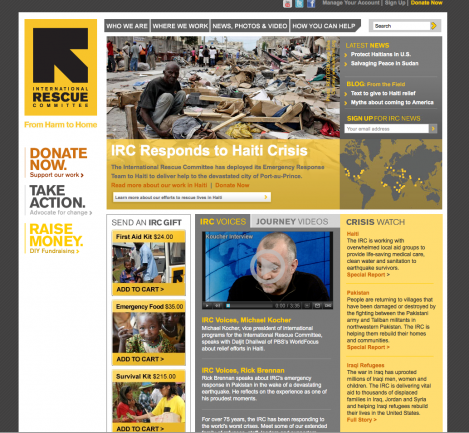
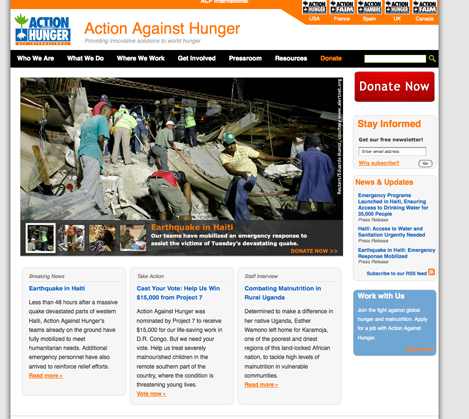
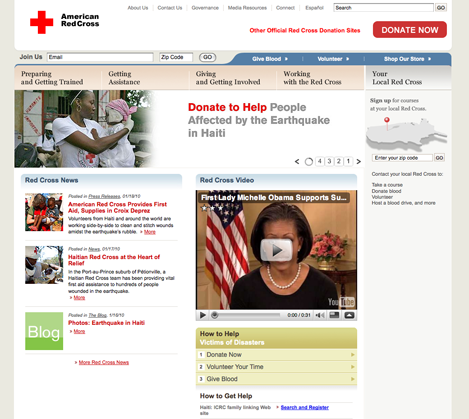
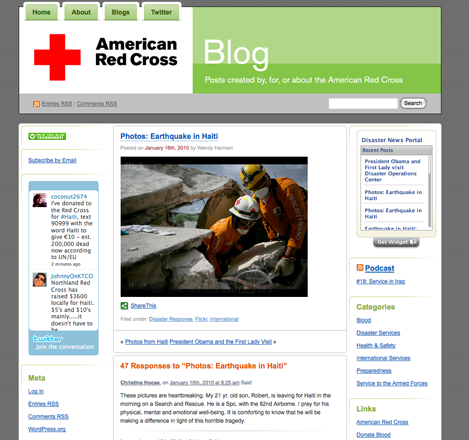
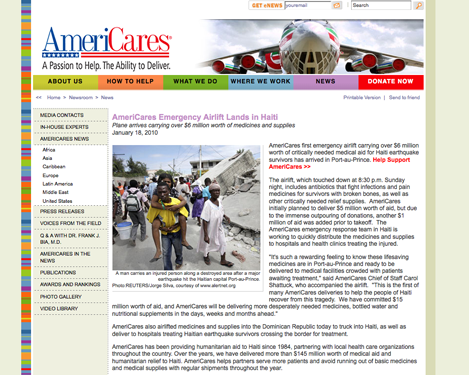
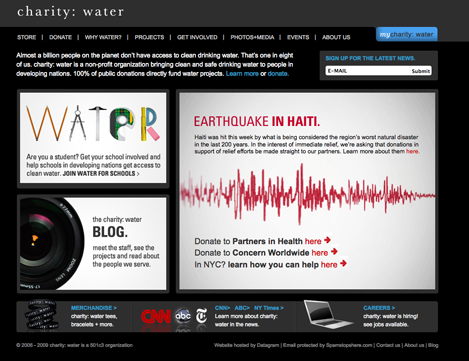

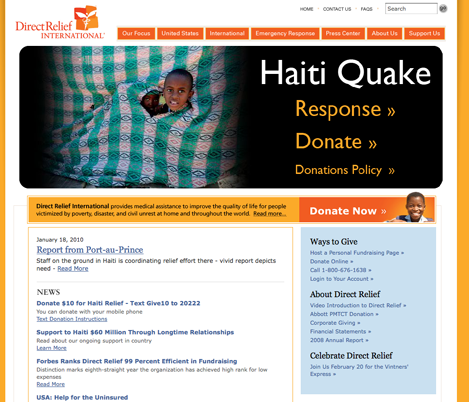
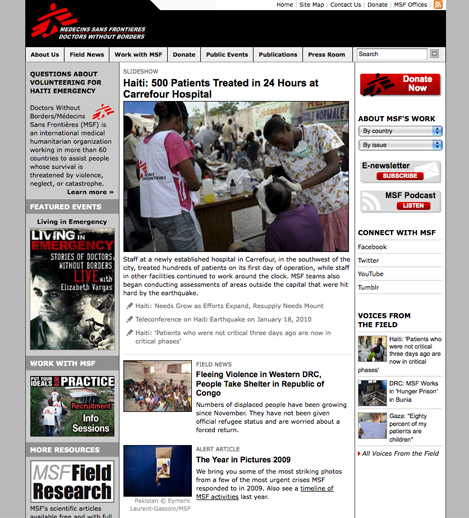

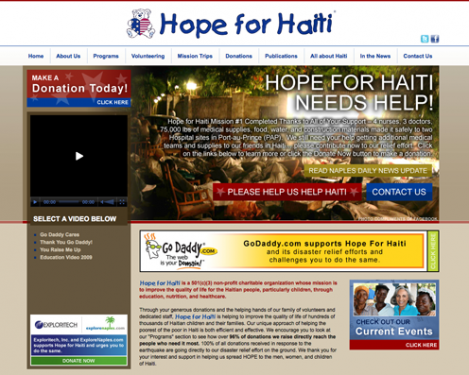
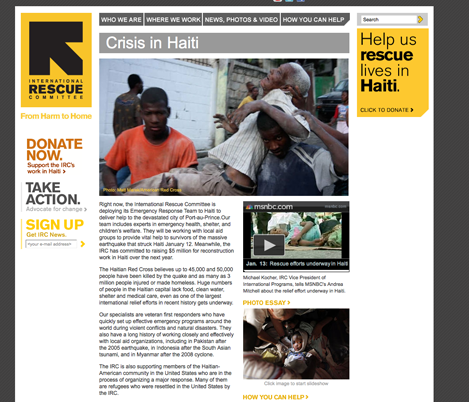

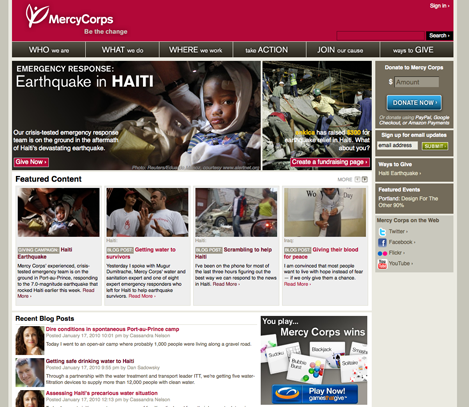
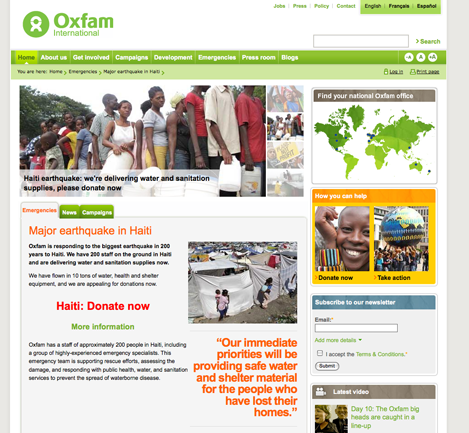
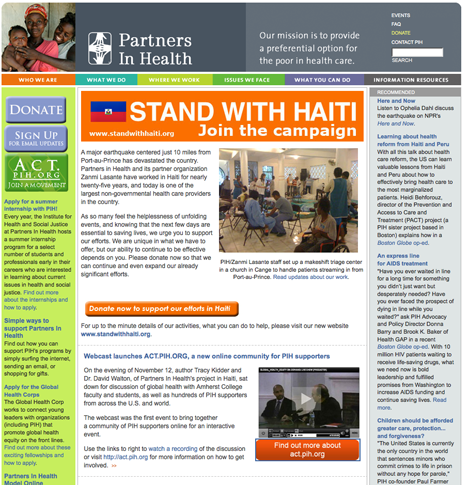
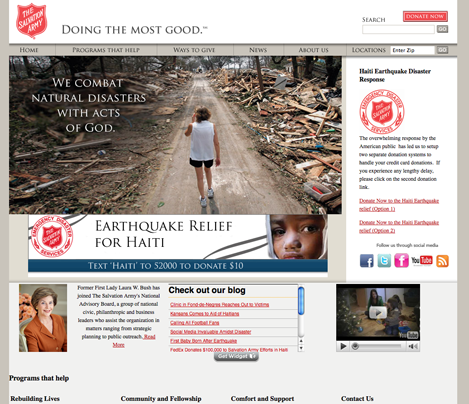

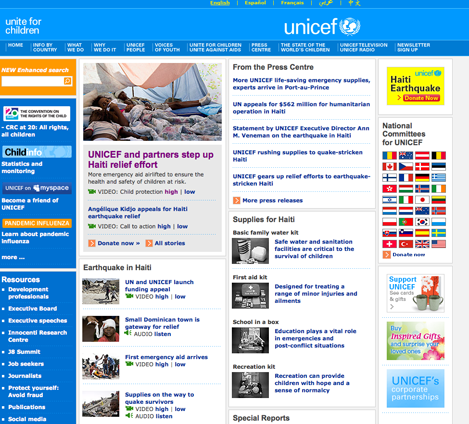
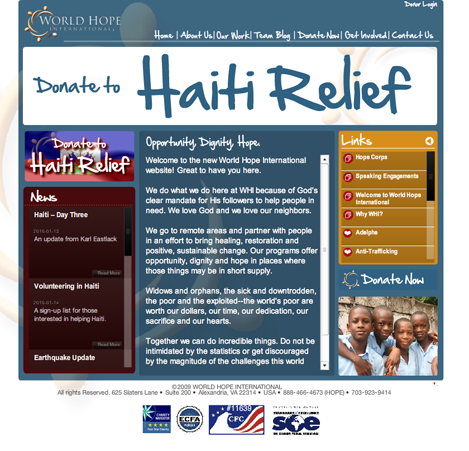
As a photojournalist I often find myself asking the question: What impact does visual storytelling have on society? As someone who works for a nonprofit, I often ask myself: How much does visual storytelling impact an organization’s ability to garner funds and support?
This post is more a series of questions than a string of conclusions. It’s a chance to articulate some of the chatter that goes on in my mind, and hopefully elicit some thoughtful responses. I have my own conviction about the positive and extensive impact that visual documentation has for nonprofits, but it’s a conversation I’d like to open up.
In the wake of the devastating earthquake in Haiti, it’s no surprise that nonprofits around the world have quickly responded to the crisis and made enormous strides in securing aid for the country. The slideshow at left is a compilation of a range of nonprofit’s homepages, and how they are telling the story of what’s currently going on in Haiti.
I will let you draw your own conclusions and observe your own reactions to each. Clearly there is a variance in approach: large photos, many photos, no photos, video, text, maps, lists, etc. What seems most effective to you? What engages you most, and brings you to the heart of the story? How does the coverage of the mainstream media supplement these nonprofits’ efforts? Does the imagery compel you to give or act more? Or are you already convinced of the need, making added visuals obsolete in enhancing your understanding or sympathy? Is there any distinction that you feel as a user between the content of the photos (e.g. groups, individuals, proximity to subject, frame, subjects looking directly at camera, etc.)?
I am curious about possible ways to measure the donations gathered by each of these organization, and if there is any obvious correlation to the way they used visuals. And maybe it doesn’t matter. In times of emergency, maybe we’re all compelled to help to our greatest ability because we inherently understand the need. But what about when a situation isn’t a “crisis” in the general sense? What about when it’s a drawn-out, complicated, cyclical problem that needs solving? How far can visual storytelling go in enlisting people then?
Looking forward to your thoughts.